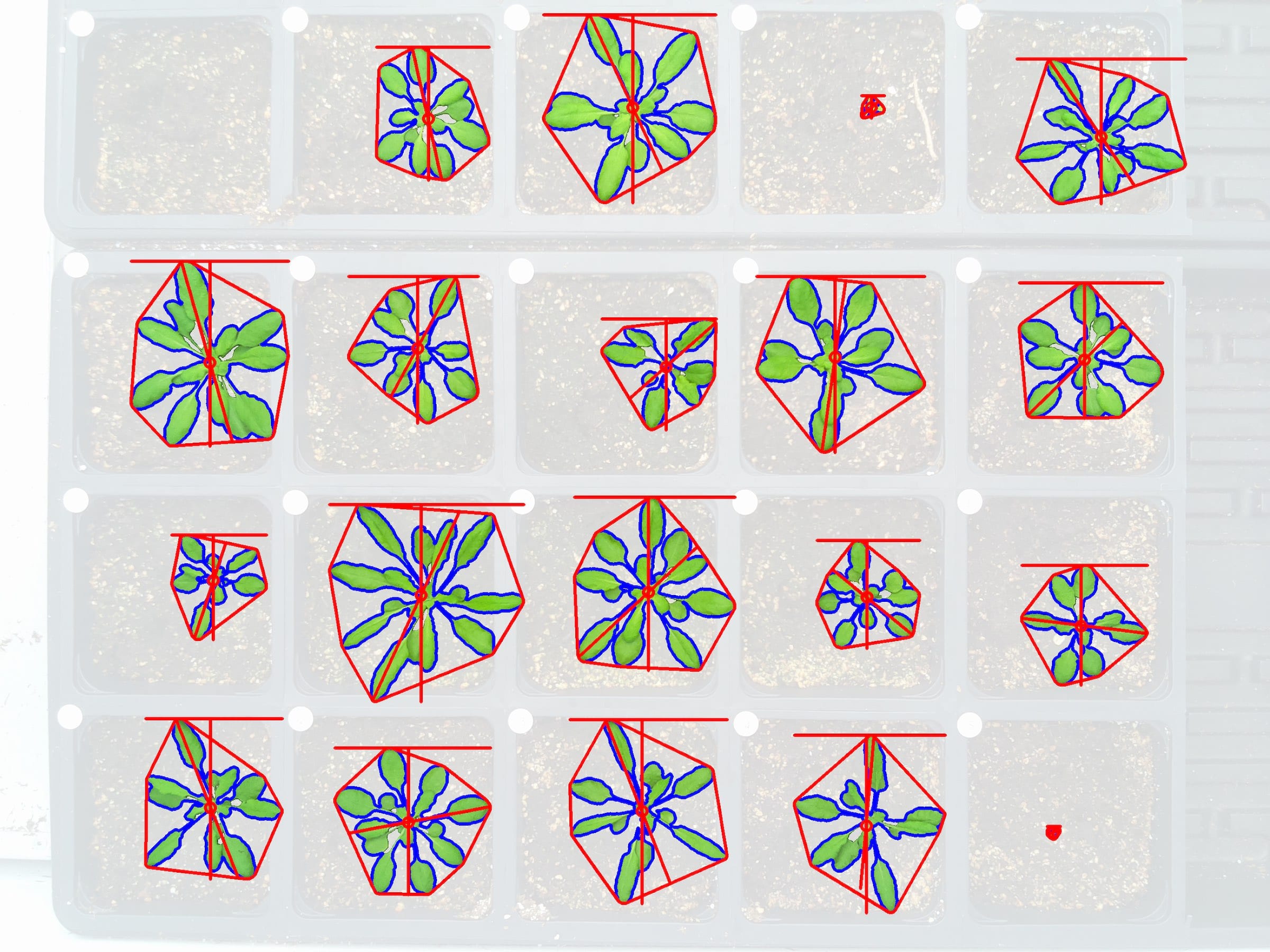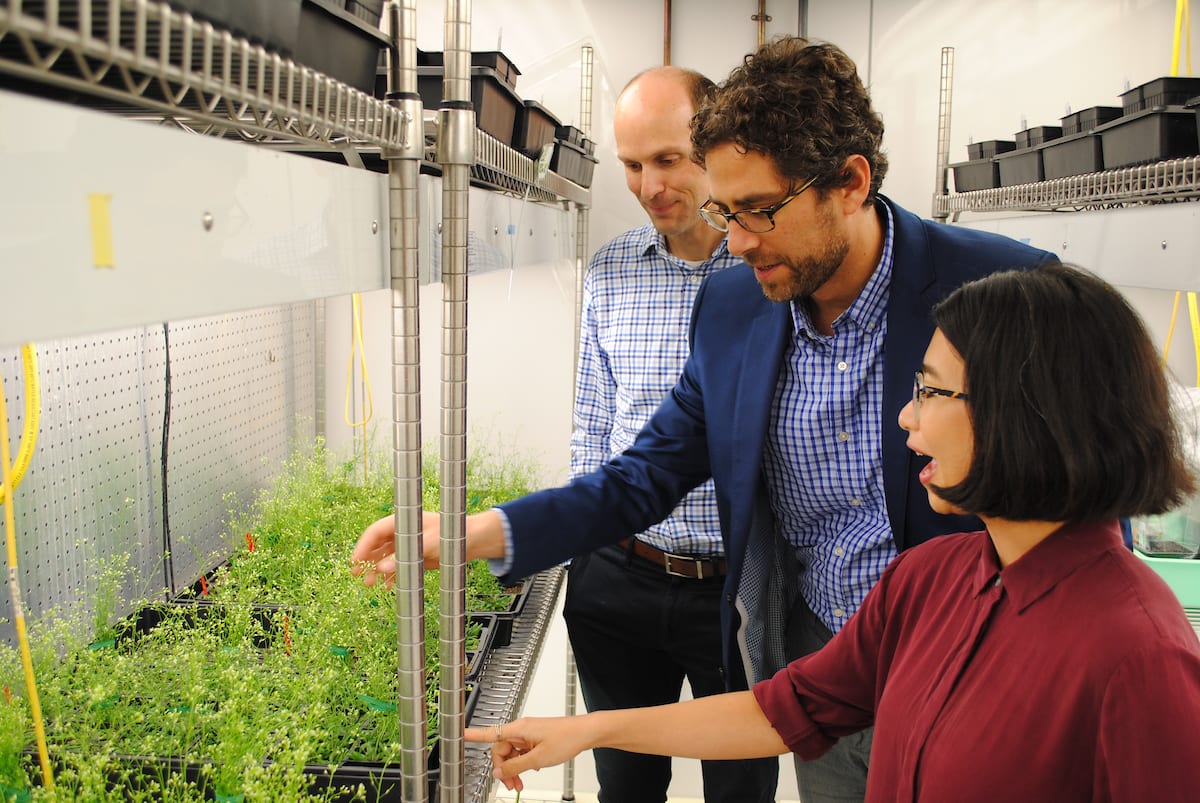As CO2 Levels Rise, Danforth Center Scientists Explore the Effect on Plants in an Effort to Improve Crops for a Changing Environment
It’s no secret that we face many grand challenges when it comes to feeding the world. Not only do we have to increase the amount of food we produce while also preserving natural resources, we have to reckon with a changing environment that is creating new challenges around the globe. These new environmental challenges include extreme temperatures, drought and less biodiversity, but perhaps one of the most pressing environmental questions we face is how to manage the impact of increased levels of CO2 on agriculture.
Today, CO2 levels are higher than at any point in the past 800,000 years.1 In 2017, the global average amount of CO2 hit a new record: 405 parts per million.2 We know the grand challenge that lies before us - but how are we preparing for it?
A unique interdisciplinary collaboration of Danforth Center biologists and Washington University computer scientists led by Slotkin have developed a research project that garnered $3 million in support from the National Science Foundation. The research team is studying how plants react to increased levels of CO2 over generations. Not only are they monitoring the plants themselves, but they will also study how the increased level of CO2 affects their offspring.
Slotkin’s research will result in a unique model that helps predict the lasting effects of environmental challenges on a plant’s genome and physical growth. If successful, this research could help equip farmers with the information they need to make better decisions when it comes to growing food on a large scale. For example, if increased levels of CO2 result in leafier, wider plants, farmers could plan to plant their crops farther apart.

This research will help us prepare for the future, so once we get there we don’t have to go through trial and error. We can try to avoid learning difficult lessons
Keith Slotkin Principal Investigator, Donald Danforth Science Center
Slotkin specializes in genomics, a branch of biology that focuses on an organism’s genomes (a complete set of DNA). To tackle this research, he is collaborating with Danforth Center Principal Investigators, Malia Gehan, Ph.D., Noah Fahlgren, Ph.D., Blake Meyers, Ph.D., Sona Pandey, Ph.D., and Chris Topp, Ph.D. to tap their expertise in phenomics. Phenomics is the study of phenotypes, the set of observable characteristics, like plant shape, resulting from the interaction of an organism's genotype. When Slotkin joined the Danforth Center in 2018, he was inspired by the incredible advances his colleagues had made analyzing 3D shapes of whole plants. Meanwhile, analyzing images in genomics was still being done with linear chromosome models, a technique that has not advanced in 15 years. “Our big idea is how we can use the progress that people have made in analyzing 3D shapes of plants, to analyze images on a molecular level?” says Keith. While imaging techniques used in phenomics versus genomics are very different, Keith believes the analysis can be the same.

Keith’s team will use image analysis technology to monitor how a plant’s chromosomes alter their shape over time when exposed to extreme levels of CO2, and how the difference in chromosome shape effects the plant’s phenotype. They are including six diverse plants in their study, chosen for ease of work and variation among plants, so that their findings could prove a “rule of life” discovery that is true across the plant kingdom.
“This project is important because we can take technology advancements that scientists in the field of phenomics utilize to be successful, apply it to this research, and transform the field of genomics in the process.”
By integrating with the Danforth Center’s Mutant Millets curriculum, the research has the potential to inform how we will grow food in a changing environment while also inspiring the next generation of plant scientists. Through Mutant Millets, high school classrooms will cultivate setaria plants, observe their development, and record and submit data to the research program.
“Mutant Millets allows students to engage in authentic science by helping collect data on Millet phenotypes that helps researchers answer questions about the important crop. By being part of the scientific process, students start to see themselves as scientists now and in the future,” explains Director of Education Research and Outreach Kristine Callis-Duehls.
Since 2013, Mutant Millets has been disseminated into 35 high schools in Missouri, Illinois, Kentucky and Ohio, providing over 4,000 students and 50 teachers with scientific training and hands-on STEM experiences.